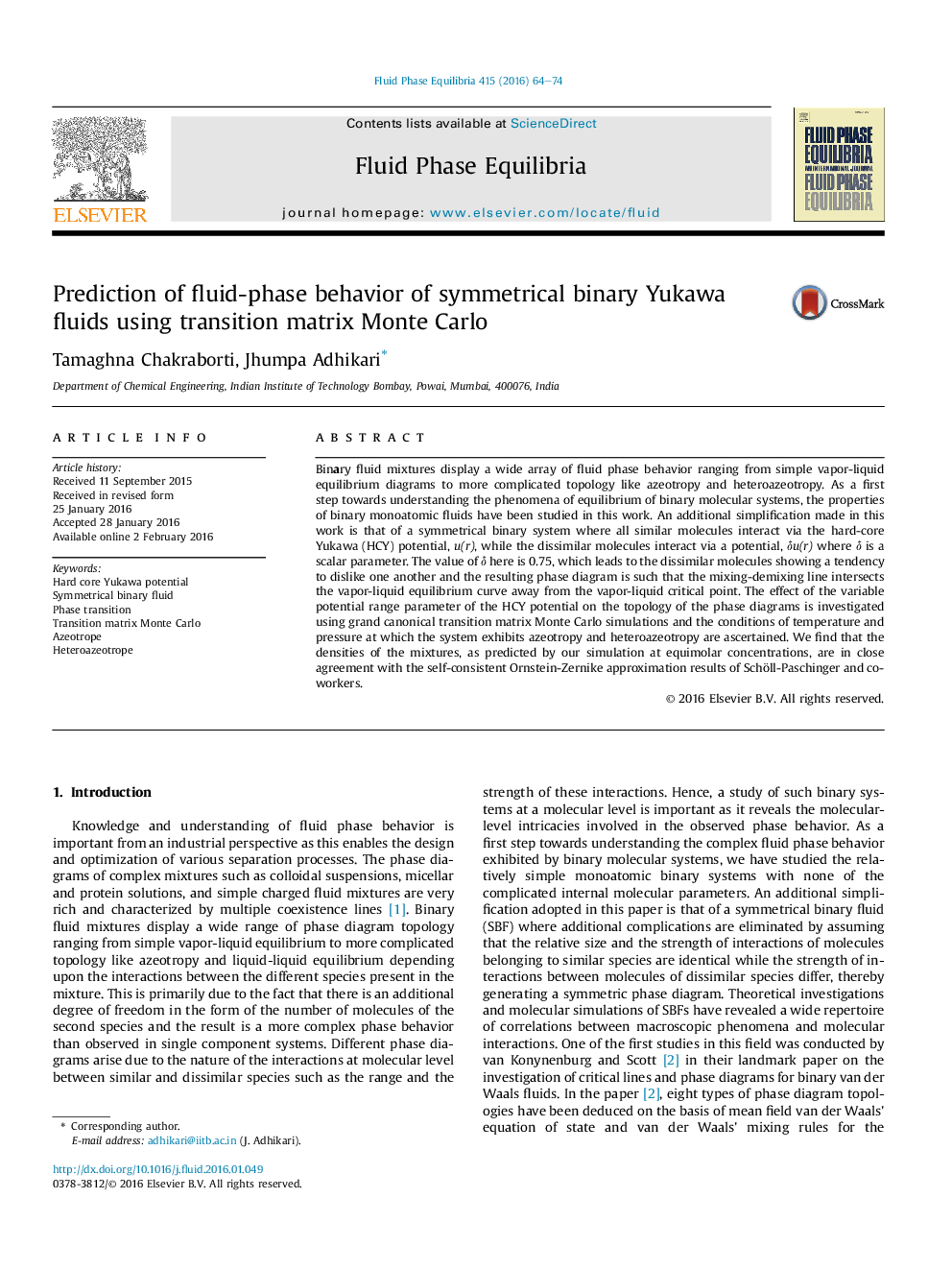| کد مقاله | کد نشریه | سال انتشار | مقاله انگلیسی | نسخه تمام متن |
|---|---|---|---|---|
| 200604 | 460487 | 2016 | 11 صفحه PDF | دانلود رایگان |
• GC-TMMC has been employed to study the phase diagrams of binary symmetric HCY fluids.
• Pσ3/ε-x-y and Pσ3/ε vs. ρσ3 phase plots for HCY fluids plotted at different temperatures.
• Transition from heteroazeotropic to azeotropic behavior observed with change of temperature.
• Change in behavior of value of g(r) at contact point with change in phase space topology.
• Greater variation in pressure as one increases the interaction range.
Binary fluid mixtures display a wide array of fluid phase behavior ranging from simple vapor-liquid equilibrium diagrams to more complicated topology like azeotropy and heteroazeotropy. As a first step towards understanding the phenomena of equilibrium of binary molecular systems, the properties of binary monoatomic fluids have been studied in this work. An additional simplification made in this work is that of a symmetrical binary system where all similar molecules interact via the hard-core Yukawa (HCY) potential, u(r), while the dissimilar molecules interact via a potential, δu(r) where δ is a scalar parameter. The value of δ here is 0.75, which leads to the dissimilar molecules showing a tendency to dislike one another and the resulting phase diagram is such that the mixing-demixing line intersects the vapor-liquid equilibrium curve away from the vapor-liquid critical point. The effect of the variable potential range parameter of the HCY potential on the topology of the phase diagrams is investigated using grand canonical transition matrix Monte Carlo simulations and the conditions of temperature and pressure at which the system exhibits azeotropy and heteroazeotropy are ascertained. We find that the densities of the mixtures, as predicted by our simulation at equimolar concentrations, are in close agreement with the self-consistent Ornstein-Zernike approximation results of Schöll-Paschinger and co-workers.
Figure optionsDownload as PowerPoint slide
Journal: Fluid Phase Equilibria - Volume 415, 15 May 2016, Pages 64–74
